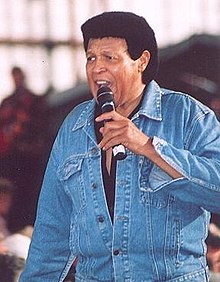


Philadelphia is home to one of the world's most vibrant and well-documented musical heritages, stretching back to the colonial era. Innovations in classical music, opera, R&B, jazz, soul, and rock have earned the music of Philadelphia national and international renown. Philadelphia's musical institutions have long played an important role in the music of Pennsylvania and that of the nation, especially in the early development of hip hop music.[1] Philadelphia's diverse population has also given it a reputation for styles ranging from dancehall to Irish traditional music, as well as a thriving classical and folk music scene.
The Philadelphia Orchestra's third conductor, Leopold Stokowski, championed American classical music of the 20th century, and on tour, in recordings, and notably in Walt Disney's 1940 animated film Fantasia, brought the traditional and modern classical repertoire to a broad American listening public for the first time. The Curtis Institute of Music on Rittenhouse Square, founded in 1924 by Curtis Publishing Company heiress Mary Louise Curtis Bok, has trained many of the world's best-known and respected American composers and performers, including Leonard Bernstein and Samuel Barber during the 20th century, and current stars Juan Diego Flórez, Alan Gilbert, Hilary Hahn, Jennifer Higdon, Lang Lang, and Ray Chen.
The city has played an equally prominent role in developing popular music. In the early years of rock and roll, a number of South Philadelphia-born popular vocalists made Philadelphia and popular music virtually synonymous, including Chubby Checker, Frankie Avalon, and Bobby Rydell. This led to the airing of the popular rock and roll dance show American Bandstand, hosted by Dick Clark from the WPVI-TV studios at 46th and Market Streets at the time, where teenagers would descend in droves after school to be televised dancing to the latest hits on the pop charts in front of a national audience.
- ^ "The Sounds Of Philadelphia". Press Kit. Philadelphia Convention & Visitors Bureau. Archived from the original on February 22, 2006. Retrieved March 29, 2006.